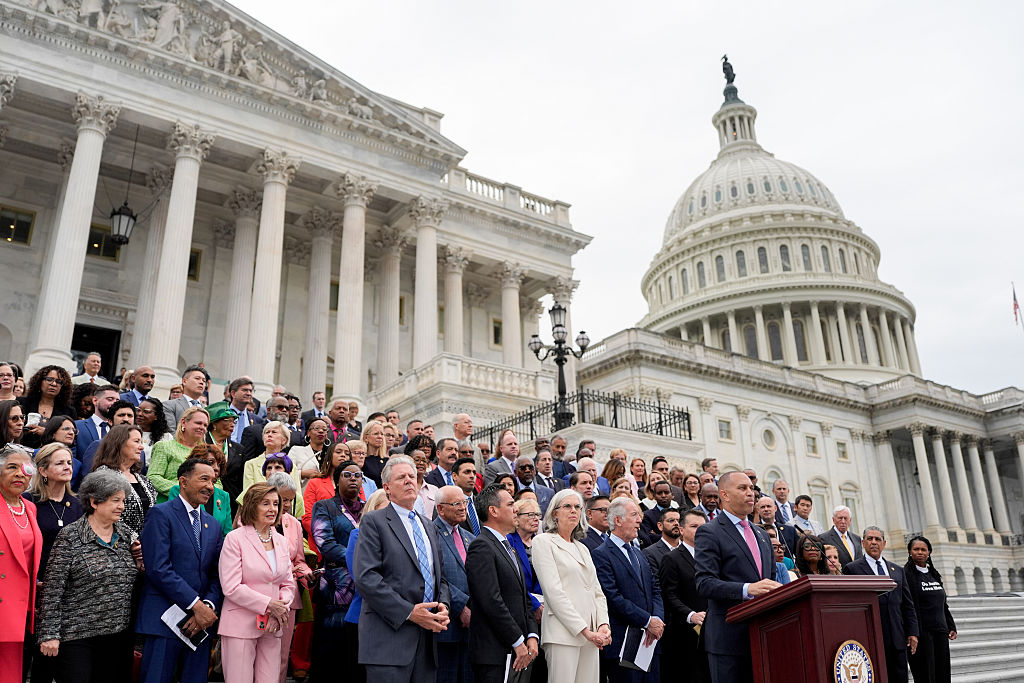Maryland Governor Wes Moore recently said on a podcast that Democrats shouldn’t be thinking about 2028 right now. Focus on the present, not the next presidential cycle, he urged—going so far as to suggest that even eyeing 2028 is “disqualifying.”
I admire Governor Moore. He is one of our party’s best leaders. I agree with his instincts for urgency but I think we can get to work right now and also prepare for the future. Urgency also means preparing the next generation to lead—starting today.
[time-brightcove not-tgx=”true”]
The Democratic Party brand is in crisis. And one essential part of fixing it is to elevate the next generation of leadership—not in 2027, not after the midterms, but right now. We will not win without it.
Let’s start with the bad news: in poll after poll, the Democratic Party is losing the perception war. We’re increasingly viewed as the party of the status quo—of aging leadership, of elite institutions, of technocratic detachment from the everyday struggles of the people we aim to serve. Ask voters under 40 what Democrats stand for and too often, you’ll get a shrug. Ask swing voters in battleground states how they feel about the direction of the party, and the numbers are bleak. The Wall Street Journal recently reported Democratic favorability is at a 35-year low.
Now the good news: the bench of leaders ready to step up to the plate for Democrats is not just deep—it’s exceptional.
Read More: Poor People Are America’s Swing Voters
We have governors with big wins and broad appeal: Wes Moore, Gretchen Whitmer, Andy Beshear, Josh Shapiro, JB Pritzker, Gavin Newsom, Phil Murphy.
We have senators like Ruben Gallego, Elissa Slotkin, Chris Coons and Chris Murphy, mayors like Mitch Landrieu and Justin Bibb, cabinet secretaries like Gina Raimondo and Pete Buttigieg, and rising stars like James Talarico and Rep. Sarah McBride who are leading boldly and redefining the Democratic brand.
We have incredible 2025 gubernatorial candidates in New Jersey with Rep. Mikie Sherrill and Virginia with Rep. Abigail Spanberger.
Organizations such as NewDEAL Leaders, and Next50 are recruiting, electing, and supporting state-and-local leaders who represent the next generation of party leadership. But unless you’re a political obsessive, you probably couldn’t pick half of them out of a lineup.
That’s not a messaging problem. It’s a visibility problem.
Voters don’t fall in love with résumés—or even results. They connect with people who show up, speak clearly, and make them feel seen. That kind of resonance takes repetition and presence. And it takes a willingness to step into the spotlight before you’re asked.
Presidential campaigns typically begin with vague denials”—shortly before a quiet swing through Iowa or a PAC launch. There’s an old tradition of waiting until after the midterms to get serious, so as not to “distract” from the party’s broader work.
That tradition no longer serves us. In fact, it’s hurting us. Our brand is underwater. And part of rebuilding it is showing voters new, compelling faces of the Democratic Party. You don’t change the brand with a message–you change it with leaders.
Read More: Democrats Need to Stop Talking About Our Accomplishments
In 2020, I worked for Joe Biden during a crowded primary. One of the most compelling arguments for his candidacy was that he wasn’t just experienced—he was electable, and he had already proven it. In 2018, as a former vice president, he hit the trail hard for Democrats at every level. He showed up in red districts and purple states. He rallied crowds, recorded robocalls, and helped flip seats like Conor Lamb’s in Pennsylvania. That reputation wasn’t handed to him. He earned it—by showing up early, often, and everywhere and showing democratic primary voters that he knew how to win in tough places.
Anyone eyeing 2028 should be doing that work now—or step aside for someone who will.
Winning governors’ races in 2025 and flipping red seats in 2026 will require changing who voters picture when they think of “the Democrats.” That starts with leadership. Anyone aiming to be the party’s standard bearer needs to act like it now—by supporting down-ballot candidates, organizing with state parties, raising money, recruiting talent, and showing up for the fights that matter.
We should celebrate the large and competitive primary field that 2028 will yield. We will be enhanced by more ideas, from more leaders. This process will only make us stronger by demonstrating our greatest asset: our talent.
It will be important for all of those candidates to remember that the presidency is more than an office—it’s the leadership of a movement, a message, and a national coalition. If you want to lead the Democratic Party, start leading it now.

